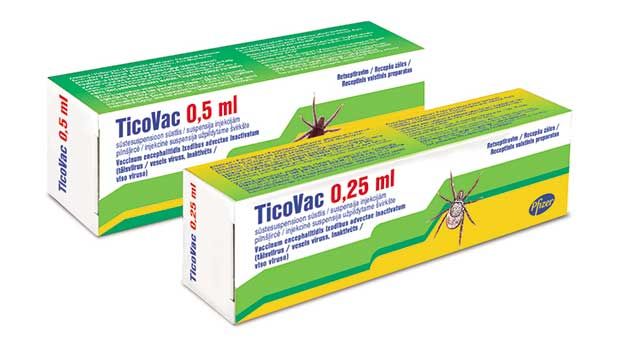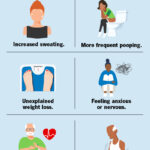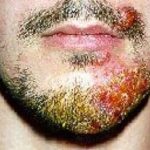Tick-borne encephalitis (TBE) is a potentially severe viral infection of the central nervous system transmitted primarily through the bite of infected ticks, particularly of the Ixodes ricinus and Ixodes persulcatus species. TBE is endemic in parts of Europe and Asia, with increasing incidence linked to changing climate patterns and rising outdoor recreational activities.
The TBE virus (TBEV) can lead to long-lasting neurological complications or even death. The most effective method of preventing TBE is through vaccination, particularly for travelers, forestry workers, and residents in endemic areas.

Epidemiology and Risk Areas of TBE
TBE is most prevalent in forested areas of Central, Eastern, and Northern Europe, including countries like Austria, Germany, Switzerland, the Baltic States, and parts of Russia. The virus is also endemic in China and Japan. Each year, thousands of cases are reported, with peaks occurring between April and November, coinciding with the tick activity season.
How the TBE Vaccine Works
The TBE vaccine is an inactivated virus vaccine, which means it does not contain live virus and cannot cause disease. It stimulates the immune system to develop protective antibodies against TBEV, providing robust defense against infection.
Key Features of the Vaccine:
- Inactivated (killed) virus
- Administered via intramuscular injection
- High efficacy (≥95%)
- Suitable for adults and children aged 1 year and older
- Booster doses ensure long-term protection
TBE Vaccination Schedule
Vaccination schedules may vary slightly by manufacturer (e.g., FSME-IMMUN or Encepur), but generally follow this standard:
Primary Series:
- First Dose: Day 0
- Second Dose: 1–3 months after first dose
- Third Dose: 5–12 months after the second dose
This schedule provides immunity for at least three years.
Accelerated Schedule (for urgent travel):
- First Dose: Day 0
- Second Dose: Day 7
- Third Dose: Day 21
Full protection is typically achieved two weeks after the second dose in an accelerated schedule.
Booster Doses:
- First Booster: 3 years after primary series
- Subsequent Boosters: Every 5 years for people under 60, every 3 years for those over 60
Who Should Get the TBE Vaccine?
Recommended Groups:
- Travelers to TBE-endemic regions during tick season
- Residents of rural or forested areas in endemic zones
- Outdoor workers: forestry, farming, geological survey, and military personnel
- Hikers and campers engaging in outdoor activities in risk regions
- Children aged 1 year or older living in or visiting endemic areas
Vaccination is especially critical for people engaging in prolonged stays or repeated visits to high-risk locations.
Effectiveness and Duration of Immunity
The TBE vaccine offers high levels of protection:
- Efficacy: Between 95% and 99% after full vaccination
- Onset of Immunity: Within two weeks after the second dose
- Duration: At least 3 years; extendable with boosters
Protection levels remain high even after several years when booster schedules are maintained.
Side Effects and Safety Profile
The TBE vaccine has an excellent safety profile. Most side effects are mild and resolve within a few days.
Common Side Effects:
- Pain, redness, or swelling at injection site
- Fatigue
- Headache
- Fever (especially in children)
Rare Adverse Events:
- Allergic reactions (extremely rare)
- Neurological reactions (reported in isolated cases, causality not proven)
No evidence links the vaccine to long-term health problems. As it contains no live virus, it is safe for immunocompromised individuals.
TBE Vaccination for Travelers
International travelers heading to TBE-affected regions during tick season should start vaccination several months in advance to ensure full immunity. The accelerated schedule is appropriate for last-minute travel but requires precise timing and may offer slightly shorter protection.
Travel clinics and public health departments often stock TBE vaccines, especially in Europe and Asia. In the U.S., travelers may need to visit specialized travel medicine clinics, as the vaccine is not routinely available nationwide.
Additional Preventive Measures Beyond Vaccination
Vaccination is the most effective measure, but additional precautions should be taken:
- Wear long sleeves and pants when outdoors in wooded areas
- Use tick repellents containing DEET or picaridin
- Perform regular tick checks after outdoor activities
- Promptly remove any attached ticks with fine-tipped tweezers
Summary and Recommendations
The TBE vaccine is a proven, effective tool for preventing a potentially severe illness that has no specific treatment. For individuals living in or traveling to endemic regions, immunization is highly recommended. Booster doses are essential for maintaining long-term protection, especially for high-risk populations.
Healthcare providers should consider TBE vaccination for all at-risk individuals and incorporate it into travel consultations and public health recommendations.
Frequently Asked Questions:
What is the tick-borne encephalitis vaccine?
It is an inactivated vaccine that protects against the tick-borne encephalitis virus, a serious infection of the brain and spinal cord.
How many doses of the TBE vaccine are needed?
A standard course consists of three doses, with booster shots required every 3–5 years to maintain immunity.
Is the vaccine safe for children?
Yes, it is approved for use in children as young as 1 year old and has a strong safety record in pediatric populations.
Can I get the TBE vaccine in the United States?
The TBE vaccine is not licensed for general use in the U.S., but it may be available at select travel clinics.
Is one dose of the vaccine enough before traveling?
One dose offers only partial protection. At least two doses are needed for reliable short-term immunity. Plan early to complete the schedule.

